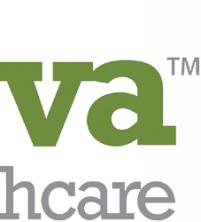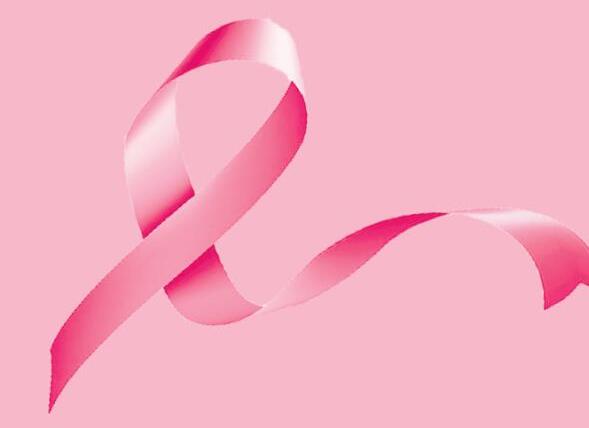THINK PINK!



Michele Sexton was diagnosed with breast cancer in 1997. She was 50 years old and had a lot to live for, but the pathology report showed no clean margins so the cancer was advanced. Having lost her father to lung cancer in 1980, she had to face the truth.
She had a talk with God to discuss how she would travel this road and face this battle. After her chemo was finished, she had 29 radiation treatments. After her recovery, she ended up forming a cancer support group, which is known as Celebrate Life.
Sexton explained Celebrate Life came from a promise she made to God. “I told Him if He would get me through this I in turn would work toward strengthening others facing the same situation,” she said. Now, more than 26 years later, the support group is still going strong. Hundreds of people have been helped and dozens of families have been touched by the organization, which is a nonprofit organization.
Sexton, 79, wants to spend more time with her family and travel with her husband, Richard Harwood.
“The time has come to step down,” she said. “I gave up the role of


president in September, and it went to a caring, competent individual who has worked with me for years.”
Sexton said while she is no longer president of the organization, she is still there and will continue to remain active in the organization that she founded.
Looking back to when she was first diagnosed with breast cancer, Sexton said she is here today because of God and her faith in Him as well as her determination.
She recalled talking with her prayer partner after the diagnosis.
“My kids weren’t married. I wanted to see my kids get married. I wanted to hold my grandchildren,” she said. “I have been able to do that.”
She has even watched grandchildren grow up. She hopes to have greatgrandchildren within the next few years.
While many people fear the worst after a cancer diagnosis, Sexton focused on the positives and put her trust in God.
“Some people don’t have the support like I had, and I was hoping Celebrate Life could show them the love and care they needed at a time they need support the most,” Sexton said.
Throughout the years, Celebrate Life has done just that. And every day since her diagnosis, Webb has celebrated life.
Kathy Webb was diagnosed with breast cancer in 2002. Her husband, Danny Webb, said they heard about the group and they became active members.
“I feel God calls people. He called us to help cancer patients. We are all volunteers and we ask for nothing back,” Danny Webb said.
“They may be facing a situation where they can’t get their medicine or pay co-pays, or they may need gas money to get to appointments. We give them hope. We pray for them. They know our hearts and it makes their eyes light up,” he added.
Kathy Webb met Sexton shortly after her mastectomy. Sexton came to her house through the Reach to Recovery program. She has been involved with the group since that day.
Kathy Webb served as secretary and helped Sexton with cancer patients throughout the years.
Sexton said when she decided it was time to retire, she wasn’t surprised
when the group voted to ask Kathy Webb to take over the role of president.
Kathy and Danny Webb are working together to see Celebrate Life continue its mission and help those who need help the most.
“New leadership can bring new ideas and help things continue to grow, so more people can be helped,” Sexton said.
Nathan Manning became active with Celebrate Life because he got to know the Webbs when he worked at radio station WNPC and organized Cruise Against Cancer as a fundraiser for them. The event started in the Sagebrush Steakhouse parking lot then grew to the Lowe’s Home Improvement Center parking lot. Now with 400 to 500 cars, it is held at Newport City Park.
In its 17 years of existence, Cruise Against Cancer has brought in about $440,000. According to the Webbs, the 2025 car show brought in the highest amount.
“We are hoping that next year’s Cruise Against Cancer event is even bigger and better,” Kathy Webb said. “We are selling tickets to give away a BMW convertible, and we hope that the fundraiser will bring in several thousand dollars to add to the car show funds.”
Next year’s event is set for Saturday, April 25. The BMW that is being raffled will be given away that day.
The Webbs are trying to build the membership of Celebrate Life. Membership numbers decreased during COVID and they are working to

recruit new members.
Volunteers are always welcome to help with cancer support group activities.
Celebrate Life meets the fourth Thursday of each month at 7 p.m. at Smoky Mountain Home Health and Hospice (SMHHH) in the conference room.

Members have said they appreciate SMHHH allowing them to use the room free of charge. Meetings are open to the public.
To learn more about Celebrate Life, call the Webbs at (423) 625-6603.







735 Cosby Hwy. Newport, TN 37821 (423) 623-5634






































‘Breast cancer didn’t run in my family’
Abreast cancer diagnosis was not at all expected when Allison Giles went for her annual mammogram.
Breast cancer had not really run in her family. Her mother was diagnosed with breast cancer in 2024 and a first cousin on her father’s side was also diagnosed with breast cancer in 2024.
“Up until 2024 there hadn’t been anyone in my family who had been diagnosed with breast cancer,” she said. “So, no, breast cancer didn’t run in my family.”
Even before Giles started working in healthcare, she said she was a stickler to getting preventative testing done in a timely manner.
Since she turned 40, she has always gotten her annual mammogram.
“I have never missed my annual mammogram,” she said. “That is something I have always done.”
When she had her mammogram in 2024, everything looked fine. When she went for her mammogram this year, it was a different story.
“If it hadn’t been for my mammogram, then my cancer likely wouldn’t have been found,” Giles explained.

Giles, 49, had her mammogram on July 9. Just a month later, on Aug. 8, she was diagnosed with breast cancer.
She had her first appointment with her general surgeon on Aug. 18 and had surgery on Sept. 18.
“Things were moving fast in the beginning, and then it was like hurry up and wait,” she recalled.
She had the mammogram, and the doctor noticed a problem. She then went for an ultrasound. After the ultrasound, she was sent for a breast MRI.
The final step was a biopsy to determine if the suspected area was cancerous, and it was determined to be cancer.
Thinking about her diagnosis, she said she tried to plan ahead. She thought about what she could and could not do, and she also thought about where help would be needed.
She knew she would have drains, so she found robes and vests with inside pockets and ordered some.
She knew it would be difficult to wash and dry her own hair because of lifting her arms above her head, so she scheduled shampoos with her hairstylist.
“I knew my mobility would be affected,” Giles explained. “So I had to be ready to handle what I would have to face.”












After getting the diagnosis, one of the first people she called was a lifelong best friend who had breast cancer.
“We have been best friends since elementary school. I knew she had been in the same situation, and I felt like she could offer me the advice I was needing at that time, so we talked,” she said.
She then decided to use the same doctors that her friend had used during her cancer battle.
Fortunately her general surgeon and plastic surgeon are colleagues.
Giles said it was explained to her that now insurance companies have come to understand more about women’s view of their bodies, and now they see it is important for women to get the cancer removed, but to have reconstruction surgery afterwards if they wish to do so.
“Every woman’s cancer is different, and every woman must make her own decisions,” she explained.
Because of her age, and because of the kind of cancer with which she was diagnosed, she opted to have a double mastectomy. She then wanted reconstructive surgery afterwards.
“I underwent two surgeries in five days,” she explained.
While the cancer diagnosis was stressful enough, Giles’ dog became very ill. Her 11-year-old Scottish terrier fell ill on July 12 and was diagnosed with an aggressive form of lymphoma. The dog had to be put down on Aug. 15.
“It was just a horrible experience, especially during that time,” she said. “My heart was hurting.”
She talked her husband into letting her get a Scottish Terrier puppy. She named him Higgins.
“He isn’t too big for me to handle, so I can sit here with him. Higgins is my recovery dog,” she said.
Giles works for Tennova facilities - Newport Medical Center and Jefferson Memorial Hospital - as the director of patient outreach. She said although
TheTownofParrott sville Town of Parrot t s
she works in healthcare she wasn’t aware of how beneficial a nurse navigator is to patients.
After her diagnosis, she was assigned to Lindsay Robinson, an oncology nurse navigator.
“She handles every breast cancer patient’s needs,” Giles said. “She has been invaluable to me and is a direct resource.”
Robinson knows all the providers and meets with them regularly. She helps breast cancer patients coordinate their care, and even schedules appointments.
“She has been absolutely amazing. I have been so impressed with how she takes care of things,” she added.
Discussing her breast cancer diagnosis, Giles said, “I got the best case of bad news you can get. People get much worse news.”
She discussed going through a similar diagnosis with her mother just a year ago, but pointed out her mother was 28 years older.
The choices she made are different from the choices I made and that age difference does come into play, she explained.
The good news is that after the surgery, Giles is cancer free. She said her margins are clear.
“There is still the chance I may need chemo to reduce the chance of a recurrence later,” she explained.
She explained that oncotype testing will help determine whether chemo is necessary in her case.
“Hair loss, illness, more time off work. All those are consequences of having chemo,” said Giles.
Giles has a daughter who is 25, and she said her daughter has an increased chance at developing breast cancer.
For that reason, she said her daughter will undergo screenings at an earlier age.
“My family has been so supportive of me,” she added.
Although she was cleared to drive, she has still been getting chauffeured to her appointments thanks to her husband, her mother and other friends and relatives.
Looking ahead, Giles is optimistic and hopes to live another 49 years.



















2025 Old Parrot tsville Highway v ille
Parrot tsville, TN 37843 v ille, T








Mayor: GaylaHommel G ay la Hommel

All photos by John Sudbrink Jr.








































Breast cancer is a formidable disease that affects millions of individuals each year. The impact of breast cancer goes beyond those diagnosed with the disease, affecting friends, family members, professional colleagues, and others as well. That far-reaching impact means everyone has a vested interest in learning about breast cancer.
The Centers for Disease Control and Prevention notes breast cancer occurs when cells in the breast grow out of control. The breast is made up of three main parts known as the lobules, ducts and connective tissue, and which type of breast cancer a person has depends on which cells in the breast turn into cancer.
No two individuals diagnosed with breast cancer will have the same experience after being diagnosed. However, the CDC notes that most breast cancers begin in the ducts or lobules. The ducts are tubes that carry milk to the nipple and the lobules are the glands that produce milk.
The National Breast Cancer Foundation, Inc. notes gender is the foremost risk factor for breast cancer, as the World Health Organization reports that 99% of breast cancers occur in women. Additional risk factors for breast cancer include age, with two out of three women diagnosed with invasive breast cancer being older than 55, and race, as the disease affects more Caucasian women than women of other races. The NBCF also notes that women who have dense breast tissue may be at greater risk for breast cancer

because such tissue can make it harder to detect lumps.
The NBCF notes that most women who have breast cancer will never be able to identify an exact cause behind their disease. Common risk factors like gender and age are beyond women’s control, but there are some controllable risk factors that can be avoided. The WHO notes that overconsumption of alcohol and tobacco use are two such factors.
The American Cancer Society reports that the five-year survival rate for breast cancers discovered in the localized stage is 99%. That underscores the significance of early detection. The NBCF notes monthly breast self-exams and routine clinical exams increase the likelihood of early detection. Women are urged to speak with their physicians regarding how frequently they should be tested, as recommendations vary depending on each individual and their respective family histories.




Talker News
Breast cancercan be detected more accurately using artificial intelligence, according to a recent study.
Researchers found that AI improves breast cancer detection accuracy for radiologists when reading screening mammograms, helping them devote more of their attention to suspicious areas.
Previous studies have shown that AI for decision support improves radiologist performance by increasing sensitivity for cancer detection without extending reading time.
However, the positive impact of AI on radiologists’ visual search patterns remained underexplored until now.
Dutch researchers used an eye-tracking system to compare radiologists’ performance and visual search patterns when reading screening mammograms with and without an AI decision support system.
The system included a small camera-based device positioned in front of the screen with two infrared lights and a central camera.
The infrared lights illuminate the radiologist’s eyes, and the reflections were captured by the camera, allowing for the computation of the exact coordinates of the radiologist’s eyes on the screen.
Study joint first author Jessie Gommers, from the Department of Medical Imaging at Radboud University Medical Center, said: “By analyzing this data, we can determine which parts of the mammograms the radiologist focuses on, and for how long, providing valuable insights into their reading patterns.”
Twelve radiologists read mammography examinations from 150 women, 75 with breast cancer and 75 without, for the study, published in the journal Radiology.
Breast cancer detection accuracy among the radiologists was higher with AI support compared with unaided reading.
There was no evidence of a difference in mean sensitivity, specificity or reading time.
Doctoral candidate Gommers said: “The results are encouraging. “With the availability of the AI information, the radiologists performed significantly better.”
Eye tracking data showed that radiologists spent more time examining regions that contained actual lesions when AI support was available.
Gommers said: “Radiologists seemed to adjust their reading behavior based on the AI’s level of suspicion: when the AI gave a low score, it likely reassured radiologists, helping them move more quickly through clearly normal cases.
“Conversely, high AI scores prompted radiologists to take a second, more careful look, particularly in more challenging or subtle cases.”
She said the AI’s region markings functioned like visual cues, guiding radiologists’ attention to potentially suspicious areas.
She explained that, in essence, the AI acted as an additional set of eyes, providing the radiologists with additional information that enhanced both the accuracy and efficiency of interpretation.
Gommers said: “Overall, AI not only helped radiologists focus on the
right cases but also directed their attention to the most relevant regions within those cases, suggesting a meaningful role for AI in improving both performance and efficiency in breast cancer screening.”
She noted that overreliance on erroneous AI suggestions could lead to missed cancers or unnecessary recalls for additional imaging.
However, multiple studies have found that AI can perform as well as radiologists in mammography interpretation, suggesting that the risk of erroneous AI information is relatively low.
To mitigate the risks of errors, Gommers says it is important that the AI is highly accurate and that the radiologists using it feel accountable for their own decisions.
She said: “Educating radiologists on how to critically interpret the AI information is key.”
The researchers are now conducting additional reader studies to explore when AI information should be made available, such as immediately upon opening a case, or on request.
The team is also developing methods to predict if AI is uncertain about its decisions.
Gommers added: “This would enable more selective use of AI support, applying it only when it is likely to provide meaningful benefit.”

Arecent analysis from the Agency for Research on Cancer and collaborators estimated that 3.2 million new cases of breast cancer will be diagnosed annually across the globe by 2050. That would mark a significant increase in annual cases since 2022, when the World Health Organization reported 2.3 million individuals were diagnosed with breast cancer.
Though breast cancer affects millions of women and their support networks each year, it’s not always so easy to understand all of the terminology surrounding the disease. With that in mind, people recently diagnosed with the disease or those who know someone in such a position can learn these common terms to make their journey to recovery a little easier to navigate.
• Ductal carcinoma in situ (DCIS): Many terms related to breast cancer can be scary, but DCIS is among the more welcoming words a doctor may utter. DCIS is a non-invasive form of breast cancer that doctors may characterize as “stage 0.” Breast cancers identified as DCIS are very early stage and highly treatable.
• Invasive ductal carcinoma (IDC): Susan G. Komen®, an organization dedicated to raising breast cancer awareness, notes that IDC is a form of the disease that begins in the milk ducts but has spread into surrounding breast tissue and possibly into the lymph nodes or other parts of the body.
• Lumpectomy: According to Susan G. Komen®, a lumpectomy is a surgical procedure that removes only the tumor and a small amount of tissue around it. Most of the breast skin and tissue is left in place during a lumpectomy.
• Mastectomy: A mastectomy is a surgical removal of the breast. Susan G. Komen® notes there are different types of mastectomy. A modified radical mastectomy removes the breast, the lining of the chest muscles and some of the lymph nodes in the underarm area. This procedure is used to treat early and local advanced breast cancer. A total mastectomy involves surgical removal of the breast but no other tissue or nodes.
• Hormone receptor status: Hormone receptor status indicates whether or not a breast cancer requires hormones to grow. Susan G. Komen® notes a significant number of hormone receptors on a breast cancer cell indicate it needs the hormone to grow.
• Family history: Family history refers to current and past health conditions of a given individual’s biological family members. Family history of breast cancer is considered a risk factor for the disease.
• Ki-67 Rate: Susan G. Komen® notes this is a common way to measure proliferation rate. The more cells the Ki-67 antibody attaches to in a given tissue sample, the more likely the tumor cells will grow and divide rapidly.
• Local treatment: This refers to treatment that focuses on removing cancer from areas local to the breast, including the breast itself as well as the chest wall and lymph nodes in the underarm area.
These are just a handful of terms that women diagnosed with breast cancer and their family members can learn to better understand the disease and the various ways it’s treated. Additional terminology can be found at komen.org.








Health care screenings save untold numbers of lives each year. Screenings can uncover potentially life-threatening issues in their infancy. Such is often the case with cancer screenings, which are recommended for adults from all walks of life in an effort to detect the presence of the disease in its earliest, most treatable stages.
Screening can detect various forms of cancer, including breast cancer. Breast cancer screening guidelines are fluid as researchers and other health care professionals learn more about the disease. The following guidelines reflect recommendations from the United States Preventive Services Task Force (USPSTF) in 2024.
• Women are now advised to start regular mammograms at age 40. Prior to these updated USPSTF recommendations, women had been advised to start regular mammograms at age 50. But the Breast Cancer Research Foundation notes these new USPSTF guidelines now align with recommendations from other organizations.
• Screening mammograms should be scheduled every other year between the ages of 40 and 74. This timeline does not align with other organizations,
many of which urge women to get annual mammograms. Women can discuss mammogram frequency with their physicians.
• The USPSTF cited a need for more research into the benefits of breast ultrasound and MRI for women with dense breasts. Women identified as having dense breasts can open a dialogue with their physicians about breast cancer screenings and request updates on the latest opinions surrounding breast ultrasounds and MRIs.
• The USPSTF acknowledged it was unable to make specific recommendations regarding breast cancer screenings for women 75 and older, citing a lack of sufficient studies on which to base recommendations to women in this age group.
It’s important to note that USPSTF recommendations are fluid and can change. Women are urged to take USPSTF recommendations and advice from other organizations into consideration and work in concert with their health care team to identify the best screening strategy for them. More information about breast cancer screening is available at bcrf.org and uspreventiveservicestaskforce.org.
Breast cancer is marked by the formation of malignant cells in the various tissues of the breast. Family history and other factors like age increase a person’s risk for breast cancer. According to the National Cancer Institute, the most common type of breast cancer is ductal carcinoma, which begins in the cells of the ducts and accounts for roughly 70 to 80 percent of all breast cancer cases. Ten to 15% of all breast cancer cases are lobular carcinoma, which begins in the lobes or lobules.
After a person is diagnosed with breast cancer, a cancer care team will begin to discuss treatment options. It’s important to weigh all options carefully. By understanding breast cancer treatments beforehand, individuals can make more informed decisions should they need to. The following are some treatment options for breast cancer.
• Surgery: Breast cancer surgery typically involves a process to remove the cancer. A lumpectomy is a surgery that removes the tumor and some healthy tissues around it. This usually is reserved for a small cancer. Others may have a mastectomy to remove all of the breast tissue, including lobules, ducts, fatty tissue and some skin. A sentinel node biopsy may be needed to see if the cancer has spread to nearby lymph nodes. In some cases, removing several lymph nodes is necessary if the cancer has spread.
• Radiation: Radiation treatment employs high-energy rays or particles to destroy cancer cells. Radiation can be used to help lower the chances that the cancer will come back after breast-conserving surgery. It also can be used if cancer has spread to other parts of the body. The American Cancer Society says external beam radiation therapy is the most common type of radiation therapy for women with breast cancer.
• Chemotherapy: Chemotherapy involves anti-cancer drugs that may be injected or administered orally. The drugs travel throughout the bloodstream to reach cancer cells in most parts of the body. Chemotherapy may be given before surgery to shrink a tumor or afterwards to kill any cancer cells left behind or ones that may have spread. Since chemotherapy is systemic, it can affect all areas of the body and may result in various side effects, according to the NCI.
• Hormone therapy: Hormone therapy may be recommended for postmenopausal women who have been diagnosed with metastatic breast cancer that is hormone receptor positive or if the hormone receptor status is unknown. As the medications block certain hormones that some breast cancers are sensitive to, the cancer growth is stunted. Blocking the hormones also can cause the cancer cells to die, says the Mayo Clinic.
• Targeted therapy: Targeted therapy utilizes medicines that attack specific chemicals in cancer cells. By blocking these chemicals, the treatment can cause cancer cells to die. The ACS says 15 to 20 percent of breast cancers

make too much of a protein known as HER2. The most common targeted therapy medicines target HER2.
• Immunotherapy: Immunotherapy boosts a person’s own immune system with certain medications to recognize and destroy cancer cells.
A cancer care team may use any combination of breast cancer therapies to stall the growth of the cancer and stop it from coming back.


Mammograms remain the most effective method for diagnosing breast cancer and catching the disease in its earliest, most treatable stages. While various health organizations recommend different screening intervals, the American Cancer Society advises annual mammograms for women ages 40 to 54. Women aged 55 and older who adhere to ACS recommendations can switch to a mammogram every two years if in good health.
Mammograms employ low-dose X-rays to map out breasts and detect unusual growths. There are two main types of mammogram: screening and diagnostic.
The Breast Cancer Research Foundation says a screening mammogram detects changes in breast tissue that could be indicative of breast cancer in women who exhibit no other symptoms of the disease. Mammograms sometimes can detect breast cancer up to three years before a person or doctors feel a lump. During the test, the breasts are flattened between two imaging plates from a few angles to get the X-rays.

Should a screening mammogram show something amiss or not easily visible the first time around, radiologists may ask the person to come back for additional image testing. This diagnostic mammogram includes additional views. The National Breast Cancer Foundation says diagnostic mammograms take detailed X-rays of the breast using specialized techniques. They also may involve additional views or adjunct testing like ultrasound or MRI to provide a better overall picture of breast health. Diagnostic mammograms may be used to zero in on a specific area of the breast that needs further clarification.
Because a diagnostic mammogram requires taking a greater number of images, it will expose a patient to a higher dose of radiation. Still, health professionals feel the risk is worth it to help rule out cancer. Also, unlike a screening mammogram that may take several days for a radiologist to read and identify results, a diagnostic mammogram can reveal important information immediately.
Screening and diagnostic mammograms are important tools used to check for breast cancer.






Abreast cancer diagnosis can be jarring, and millions of women receive such news across the globe each year. BreastCancer.org estimates 316,950 women in the United States will be diagnosed with invasive breast cancer in 2025, as well as 59,080 new cases of ductal carcinoma in situ, a non-invasive form of the disease.
After learning they have breast cancer, individuals may not know what to do next. Certain steps may not take away the initial shock, but can help people prepare for what’s ahead.
The first step is to learn more about your diagnosis. This should include details about the type, stage and hormone receptor status of breast cancer from your doctor. Now is the time to ask the doctor to clarify anything you do not understand. He or she also may begin to spell out a treatment plan.
Unless the cancer is very aggressive, you likely have time to seek a second opinion. Another specialist can confirm the diagnosis and offer a second opinion about a potential treatment plan. After all expert opinions are gathered, you also may want to learn more through reputable sources like the Mayo Clinic or the American Cancer Society before making any treatment decisions.
Some people want to keep their cancer diagnosis a secret, but it can be helpful to let loved ones know early on. This will help you build a strong support system that can offer emotional support and additional assistance when needed. Treatment may leave you feeling weakened and ill, and you might need some helpers to lighten your load. A counselor or therapist also can help you navigate the emotions of a breast cancer diagnosis.
It can be difficult for those who are independent to admit they need assistance. You can take the reins by making a list of tasks or responsibilities that you may need help with. This way when people ask what they can do, you’ll have answers at the ready. Ideas include help with meal preparation, childcare, errands, transportation, or keeping you company during treatments.
Breast cancer can take a lot out of a person. Trying to maintain some sense of normalcy can help. Consider gentle exercise, relaxation techniques and activities that bring a smile to your face. Remember to choose healthy foods and find ways to manage stress as much as possible. Be patient with yourself, as it can take time to adapt to a diagnosis and treatment.
Breast cancer can affect your ability to work. There likely will be appointments with doctors and consultations with your care team. Looping your employer in is a smart idea. Many supervisors will be supportive of your needs. You also may want to speak with human resources about any services that could be available to you, or how you can allocate personal time off for your treatment and care.
A breast cancer diagnosis can catch anyone off guard. Taking each step slowly and learning more can make the weeks ahead a little less apprehensive.
Abreast cancer diagnosis is unwelcome news, but thanks to the tireless efforts of researchers and support from individuals and advocacy organizations, the overall five-year survival rate for breast cancer is now around 90%. That means 90 out of 100 people with breast cancer are still alive five years after diagnosis, according to the American Cancer Society.
Cancer stage at diagnosis and the patient’s overall health play important roles in beating the disease, as does the type of treatment available. There are many different types of breast cancer treatments, and hormone therapy may be recommended.
The Cleveland Clinic advises that hormone therapy can be used to treat hormone receptor-positive (HR+) breast cancer, including the most common type of breast cancer: estrogen receptor-positive (ER+) breast cancer. Estrogen is one of the two hormones (along with progesterone) that is produced in the ovaries for much of a woman’s life. After menopause, estrogen levels drop and estrogen is made in body fat and muscle, notes the organization Cancer Research UK. Estrogen and progesterone may stimulate the growth of some breast cancer cells.
Hormone receptor status in breast cancer is determined by testing the tumor tissue during a biopsy or surgery for the presence of estrogen and progesterone receptors. The technique is known as immunohistochemistry.
Penn Medicine reports that if at least 1 percent of the tested cells show these receptors, the cancer is hormone-positive. If the cancer is sensitive to progesterone, it is known as PR+. HR+ and PR+ should not be mistaken for Human Epidermal Growth Factor Receptor 2 (HER2) cancers, as HER2 cancers involve a protein that regulates cell growth rather than hormones influencing the cancer cells.
Hormone therapy may be used for certain reasons, according to the Mayo Clinic. It can reduce the size of a cancer prior to surgery. It also may slow or stop the growth of cancer that has spread (metastatic cancer). Hormone therapy also may decrease the risk of cancer developing in other breast tissue. Sometimes doctors use hormone therapy after surgery to reduce the risk of recurrence.
Hormone therapy for breast cancer may include aromatase inhibitors, selective estrogen receptor modulators or estrogen receptor down regulators. Side effects from these therapies can include fatigue, mood swings, nausea and vomiting, tender or swollen breasts, loss of interest in sex, hot flashes, and joint and muscle pain or stiffness, according to the Cleveland Clinic. Together patients and doctors can go over the risks and benefits of hormone therapy to discuss what is right for the cancer and the prognosis after treatment.











































